Instagram filter used: Normal
Photo taken at: Royal Ontario Museum
I’ll just leave this stinker here, shall I?
![]()
(video from Apollo 11 Saturn V Launch (HD) Camera E-8)
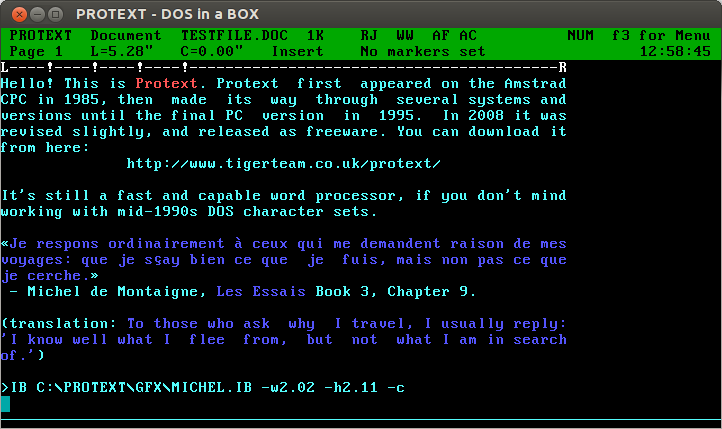
Oh man, Protext! For years, it was all I used: every magazine article, every essay at university (all two of them), my undergraduate dissertation (now mercifully lost to time: The Parametric Design of a Medium Specific Speed Pump Impeller, complete with spline-drawing code in HiSoft BASIC for the Amiga, is unlikely to be of value to anyone these days), letters — you name it, I used Protext for it.
I first had it on 16kB EPROM for the Amstrad CPC464; instant access with |P. I then ran it on the Amiga, snagging a cheap copy direct from the authors at a trade show. I think I had it for the PC, but I don’t really remember my DOS days too well.
The freeware version runs quite nicely under dosemu. You can even get it to print directly to PDF:
The results come out not bad at all:
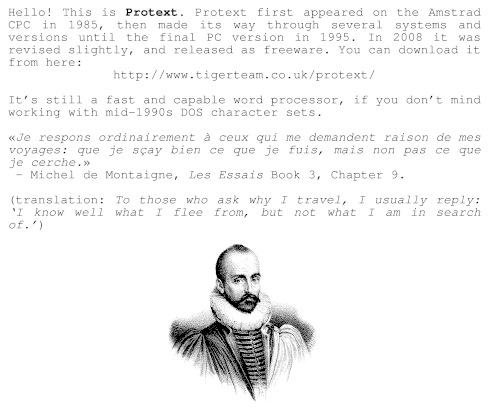 Protext’s file import and export is a bit dated. You can use the CONVERT utility to create RTF, but it assumes Code page 437, so your accents won’t come out right. Adding \ansicpg437 to the end of the first line should make it read okay.
Protext’s file import and export is a bit dated. You can use the CONVERT utility to create RTF, but it assumes Code page 437, so your accents won’t come out right. Adding \ansicpg437 to the end of the first line should make it read okay.
(engraving of Michel de Montaigne in mad puffy sleeves: public domain from Wikimedia Commons: File:Michel de Montaigne 1.jpg – Wikimedia Commons)
I picked up a fine-looking ex-Forces Bach-Simpson 635 multimeter from Active Surplus the other week.
 After opening it up and cleaning out all the corroded battery gunge, it cleaned up pretty well:
After opening it up and cleaning out all the corroded battery gunge, it cleaned up pretty well:
The needle would only go about â…– full range, though. Carefully opening up the front showed that the corrosive goo had got into the meter movement itself:
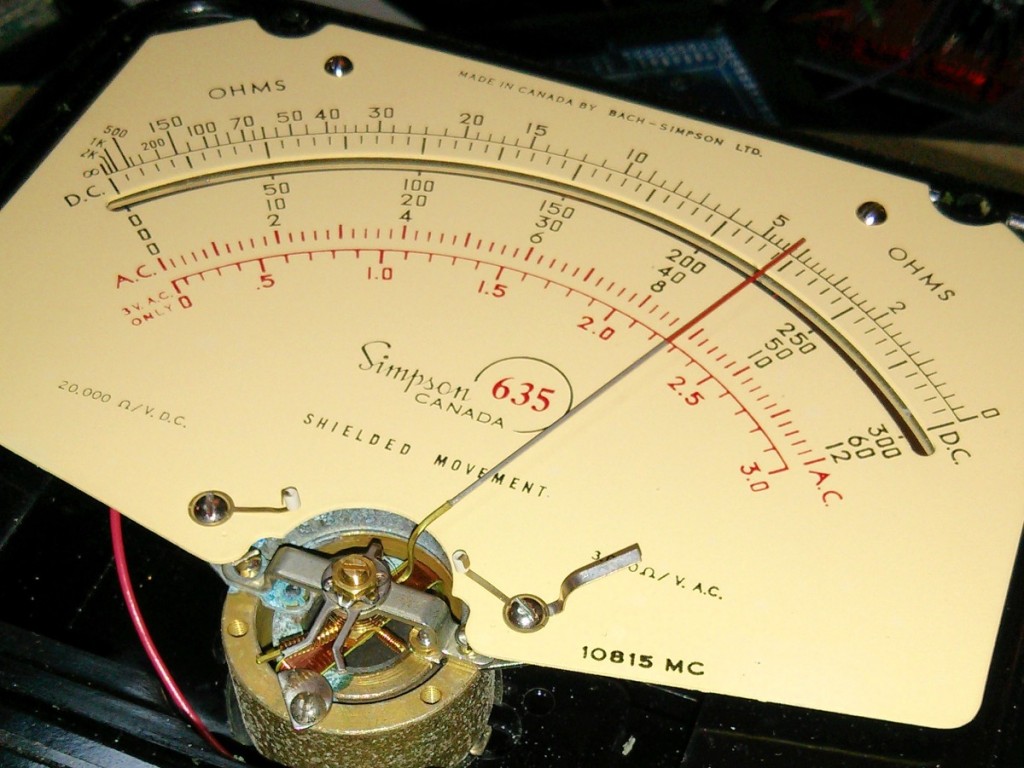 Since the meter was pretty much useless as is, I carefully scraped away at the green gunge on the stator. This freed up the moving coil, so the meter now works pretty close to how it should. Clock that dial!
Since the meter was pretty much useless as is, I carefully scraped away at the green gunge on the stator. This freed up the moving coil, so the meter now works pretty close to how it should. Clock that dial!
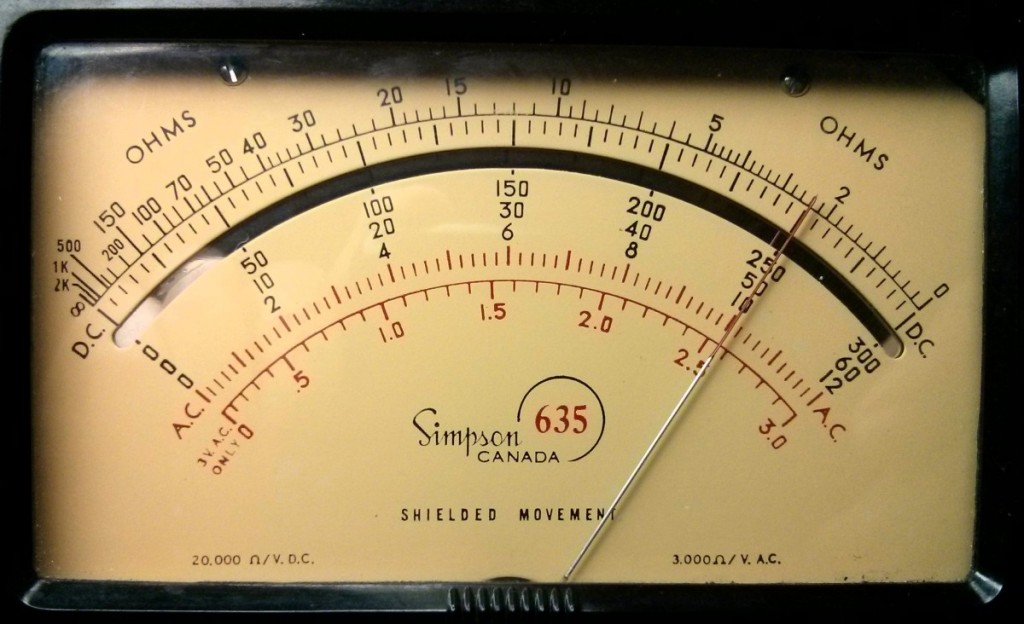
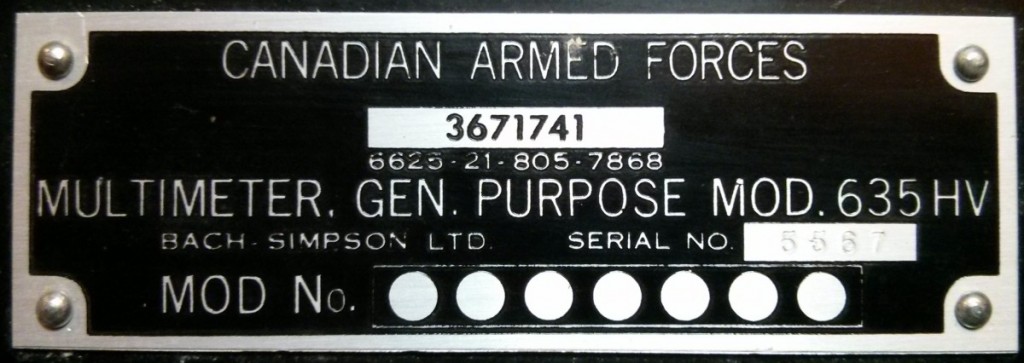 I took the HV back off the meter. There’s no way I’m going near 6 kV with this meter. Anything over 12 V makes me worried …
I took the HV back off the meter. There’s no way I’m going near 6 kV with this meter. Anything over 12 V makes me worried …
A friend asked me what the whole Arduino thing was about. Rather than handwave, I thought I’d put together a little kit he could try. It comprises:
Rather worryingly, almost all of this was stuff that was lying spare on my (very small) workbench. This might explain why very little electronics were getting done there.